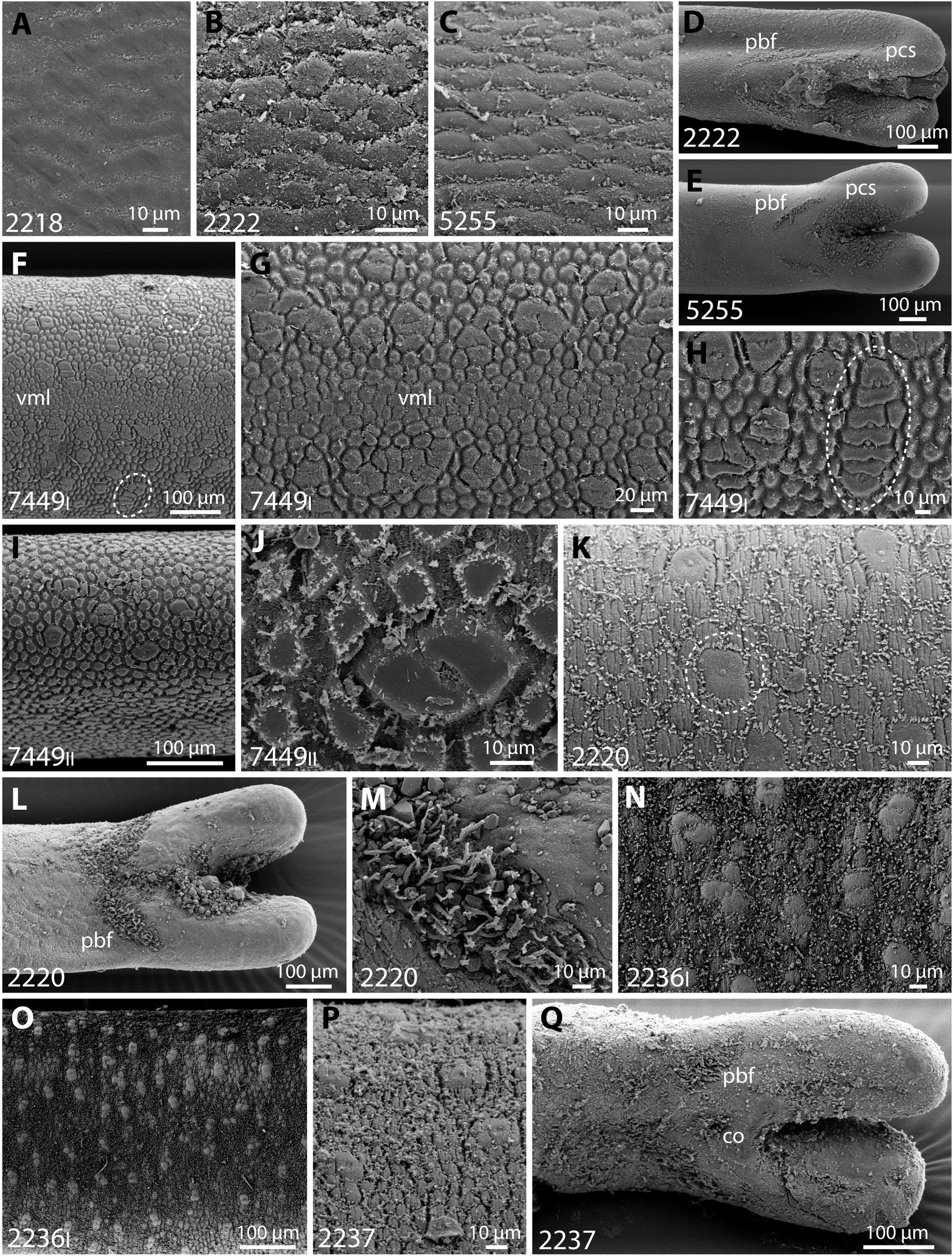
|
||
|
A–E. Gordionus wolterstorffii, cuticular surface (A–C) and posterior end (D, E) in specimens V2218, V2222 and V5255. Posterior end with precloacal bristlefields (pbf) and postcloacal spines (pcs). F–H. Paragordionus vejdovskyi, pattern of areoles on the cuticle. F. Overview with ventral midline (vml) and two types of areoles, simple areoles and larger megareoles in clusters (two of these are encircled). G. Maginification from F.H. Large cluster (encircled) of megareoles. I, J. Paragordionus dispar with smaller clusters of megareoles. K–Q. Parachordodes tolosanus. K. Superareoles, which are characteristic for Parachordodes, are encircled. L. Posterior end of V2220 with precloacal bristlefields (pbf), M. Magnification of precloacal bristlefields. N, O. Cuticular structure of V2236I with superareoles. P. Cuticle of V2237, Q. Posterior end of V2237 with precloacal bristlefields (pbf) and cloacal opening (co). |